Track-Tire Test: BFGoodrich, Toyo, Michelin, and Yokohama Tires Rated
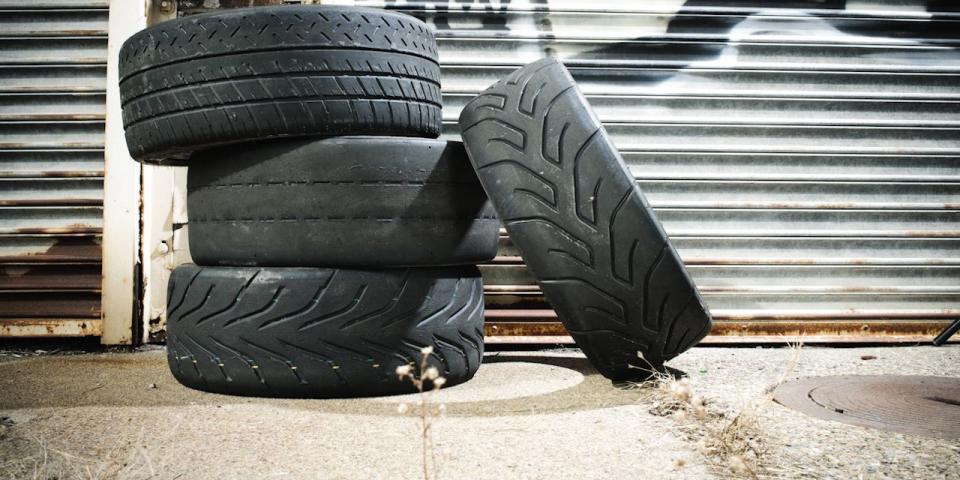

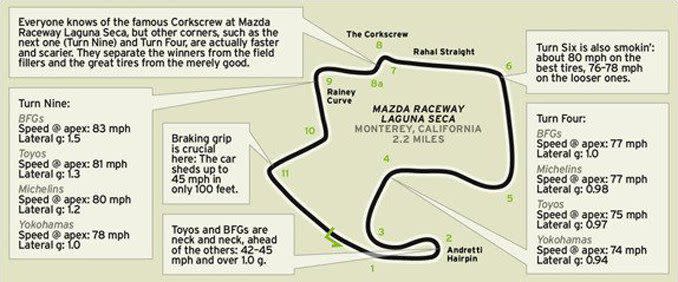

A day at the racetrack usually works out to half-hour bursts of lapping, maybe 15 to 20 hot laps per session, followed by some pit-wall sitting while you wait for other groups to take their turns. We’ve found that, on today’s heavy cars, original-equipment tires (the ones your sports car came with) are good for three to five laps before they overheat and their traction melts away. That means you have to spend your valuable time on the track driving like a tourist to cool down the tires. And that means you’re wasting money. So dedicated track wheels and tires make sense, even if they’re pricey and you have to haul them—along with a jack—to the track. But they allow you to stay out longer, learn more, and crush your stock-tired fellow lappers like tiny bugs.
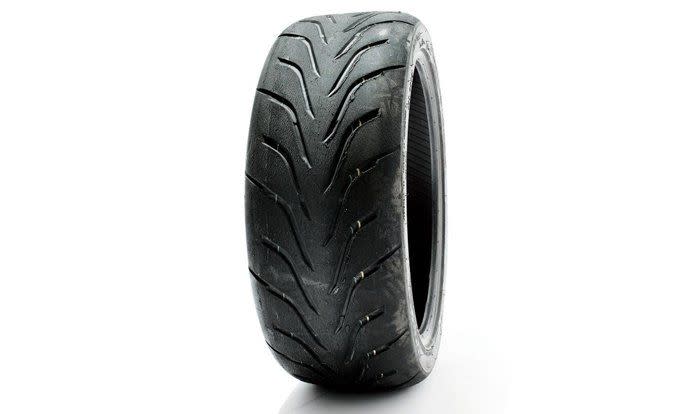
Toyo Proxes R888

We were very impressed by the Proxes R888s. By the second lap, they were warmed up and sticking fast, delivering performance well above their price grade. While they are the least-expensive tire here, they showed fanatical bite going into corners and consistent scrub limits throughout the first couple of 30-minute sessions. Modest, reassuring squeals accompany these tires when they are hard at it, giving the driver plenty of auditory feedback when approaching the limit. Don’t expect the Proxes to live forever, though. When the Spec Miata racing class moved to R888s, complaints poured in that they didn’t last as long nor stay as consistent over time as the older Toyo RA1s, and the class moved back to the RA1s. To be fair, perennially cheap racers want to pull as much out of their expensive rubber as possible, but we saw the first signs of performance fade toward the end of the testing. In short, the R888s make a great track set, especially if you’re a newbie and not planning to push as hard right away. (Price per tire: $239; www.treadzone.com)
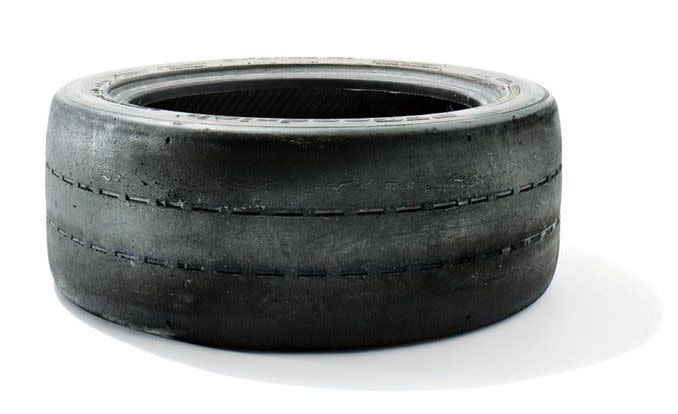
BFGoodrich g-Force R1

The g-Force R1 is basically two circumferential grooves away from being a rolling-pin racing slick. It just barely earns a DOT road certification and is strictly aftermarket track gear. Its rock-hard sidewalls adorn all the Miatas running in the Playboy Mazda MX-5 Cup, perhaps the fiercest stock-body road-racing series in America. A regular RX-8 wearing this rubber is a samurai weapon. Reserve a lap or two for warm-up, but after that, the tires are black Super Glue. Over a 30-minute session, turn-in remains ferociously sharp and high-speed drift-outs from scary corners such as Laguna’s Turn Nine are a cinch. But the limit of these tires is so high that when the grip snaps, it snaps big. If walls are around, you’ll be lucky not to paint them with the fenders—which is why novices will want to start on tires that break away sooner, more gently, and with more noise. Wear out a set or two of those before strapping on the R1s. (Price per tire: $244; www.tirerack.com)
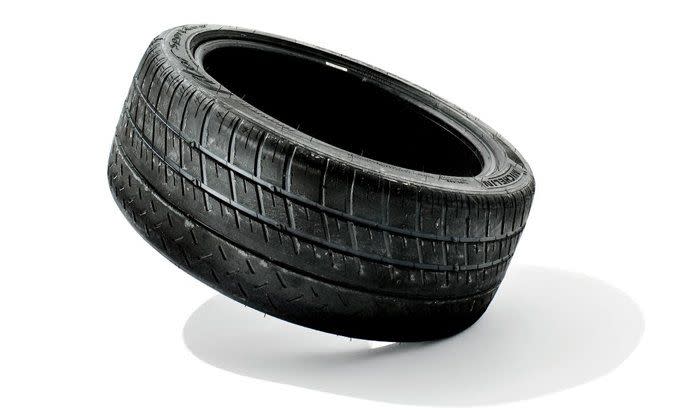
Michelin Pilot Sport Cup

The platinum AmEx choice, the Pilot Sport Cup is, in various forms, the original-equipment tire on the Porsche 911 GT3 and the Dodge Viper ACR, among other fast machines. Nobody questions your taste when you mount up a set of these babies. On the track, we were surprised to find them initially a close third behind the R1s and R888s in grip and fun generation. More plow through Turn Two and less lateral confidence through the fast corners initially knit our brows, though, over time, their performance proved more consistent than that of the R888s. This matches our own anecdotal experience, in which Pilot Sport Cups have withstood full-day test sessions on cars and looked plenty fresh enough for the drive home. Heat cycling them a few times will likely help their stickiness as well. Such are the care and feeding requirements of exotic rubber. Like a lot of expensive goods, the Cups are built to last, even if some compromises are made to make them everyday usable for their original-equipment fitments. (Price per tire: $294; www.tirerack.com)
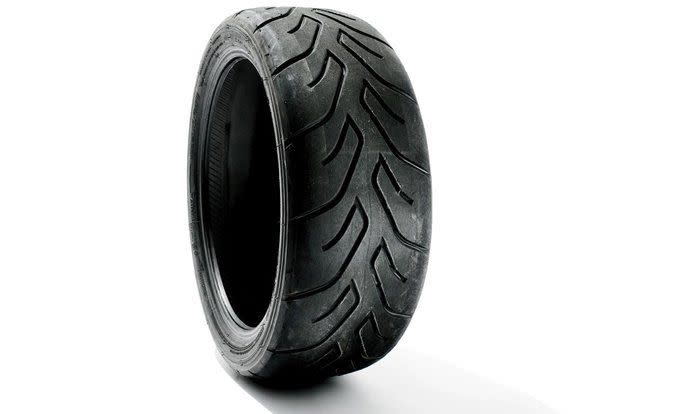
Yokohama Advan A048

Compared with the others, the oldest tire design here proved a bit more slippery, with a shortage of grip accompanied by a hearty squeal and less lively steering response. The Advan A048s were consistent over the course of our 30-minute sessions, though consistently looser. Yokohama says the American version of this tire has a harder, more durable compound than various flavors sold in Japan for autocrossing. There’s too little demand for the really gummy, fast-wearing stuff stateside, the company says, so these A048s remain targeted at those who don’t want to lug a jack, stands, and separate wheels and tires trackside but are willing to trade some track prowess for on-road longevity. That may be why the tire is popular among Lotus Elise owners—it’s the stock tire for Exiges—who mix road and track driving perhaps more than other owners do. Yokohama recommends buyers also investigate the newer AD08, which it says offers track performance on par with the A048 but even better real-world durability and wet-weather performance. (Price per tire: $289; www.tirerack.com)
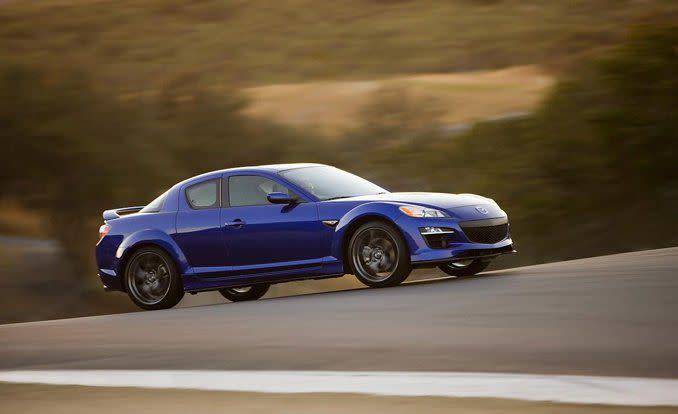
The Car and the Track
Mazda made this a cakewalk by supplying a base 2010 RX-8 Sport ($27,245), mounting our four sets of 225/40ZR-18 tires on their own spare RX-8 wheels, and inviting us along for two days of lapping at the 2.2-mile Mazda Raceway Laguna Seca near Monterey, California. At about 3100 pounds, the RX-8 has feline balance, firm clamps for brakes, and a suspension so connected and forgiving that the car will run with Porsche 911s and BMW M3s through the track’s tighter sections. The stock W-rated Dunlop SP Sport 2050s provided safe passage from Los Angeles and adhered valiantly to the surface for four to six laps. Eventually, however, they dissolved into yowling, scrubbing meltdown, so we initiated the first of many tire changes.
You Might Also Like

 Yahoo Autos
Yahoo Autos 